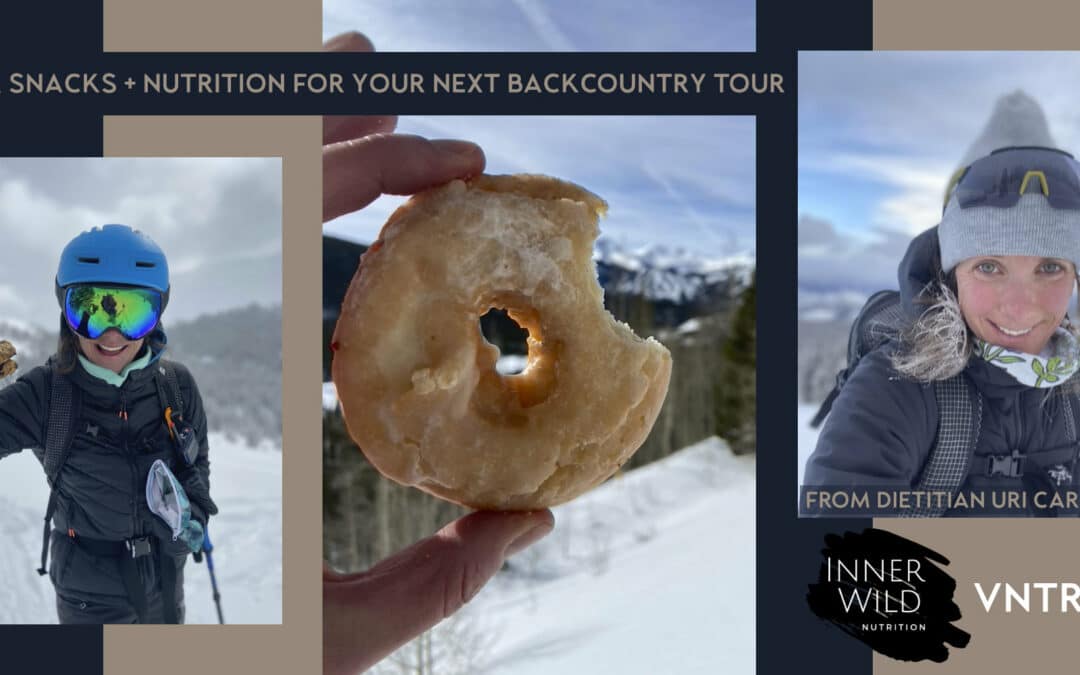As we transition from biking season to ski season, it’s fair to say that nutritional needs, both before and during your efforts can change quite a bit. There are a number of factors that go into this, but the main points I always consider is the intensity and duration of my efforts in addition to the conditions or weather outside. We all know that riding on a perfect 70 degree day is a lot different than a backcountry day when it’s 15 degrees!
So, let’s get into some specifics around fueling your backcountry winter adventures!
The general rule with pre-workout fueling is to eat your last regularly balanced meal 2.5 – 3 hours before you start your effort.
By balanced meal, I mean a source of protein, complex carbohydrate and healthy fat, plus some plants. For example, this could be a couple of eggs with whole grain toast + butter and a handful of greens or a few cherry tomatoes. Or, it could be a bowl of 2-5% fat (not non-fat!) Greek yogurt with granola, nuts and fresh or frozen berries.
Here’s why this recommendation applies: it takes insulin about 1.5 hours to kick into gear and start transporting the fuel from your food to your muscles to be used for energy. Knowing that, 2.5 – 3hrs gives your insulin time to kick in and get a head start on digesting your carbohydrates and it also allows time for the slower digesting components of your meal, including fats, protein and fiber, to get moving, without leaving you feeling like you have a brick in your stomach.
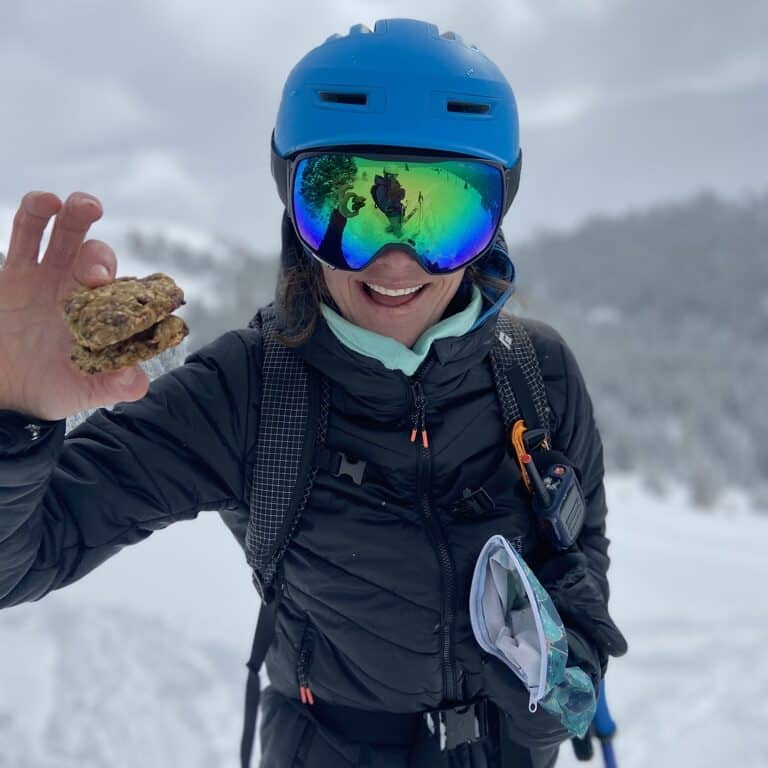
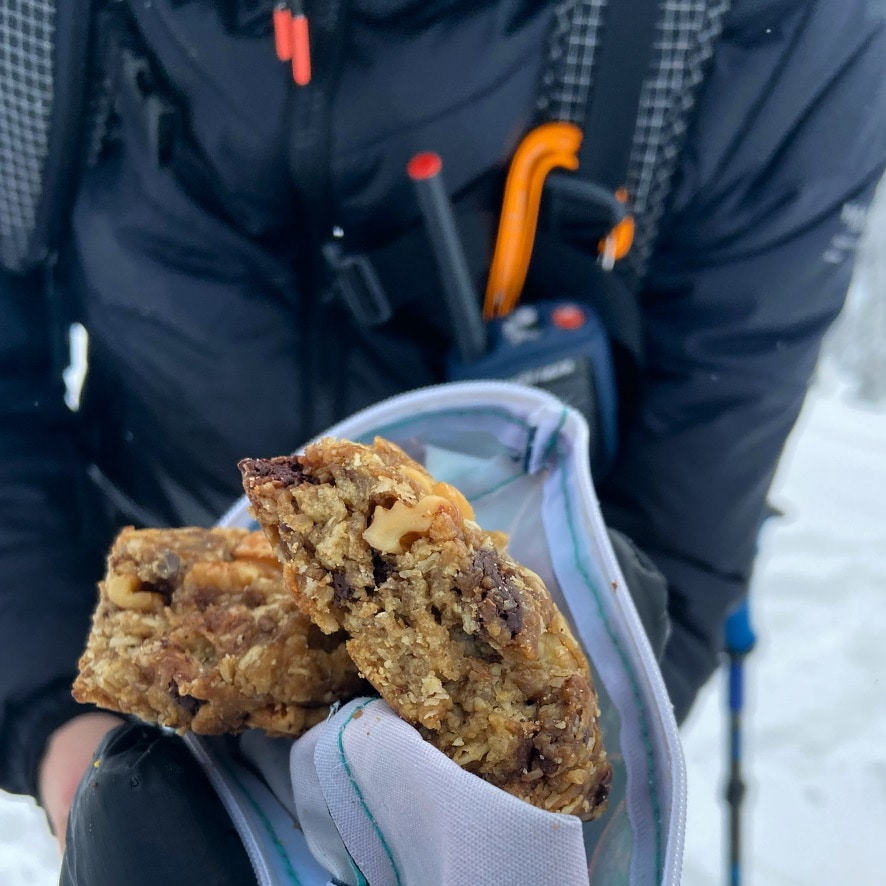
If you’re waking up for an early workout or you don’t have the time to eat a complete meal, be careful of the slower digesting proteins, fats and fibers (ex. eggs and whole grain toast, a full serving of Greek yogurt, or even a tuna salad sandwich on whole grain bread). These can sit in your gut and cause cramping or that “brick in my stomach” feeling. Plus, they don’t provide you with a quick source of energy like carbohydrates do.
Instead, if you have 1.5hrs or less before your tour, focus more on just the carbohydrates, with smaller amounts of protein, fat and fiber (ex. a bowl of Peanut Butter Puffins with soy milk or a little bit of peanut butter and banana slices on a slice of sourdough toast).
Ultimately, you should be satiated when you begin a workout, not stuffed and definitely not hungry.
Now, let’s talk about what to do during this backcountry effort:
First things first. If you’re out for longer than 60-90 minutes, you need to consume calories to prevent building up too much of a deficit. The general rule here is to replace 40-50% of the calories you burn every hour with food.
If you’re not sure how many calories you’re burning per hour, my recommendation is to start with consuming 100 calories per hour for every hour past 60-90 minutes and then increase that up to 150 and then 200 calories per hour and see how you feel. Know that the harder you’re working, the more calories you’re burning and the more you need to eat.
The nice thing about backcountry touring is that the intensity of your effort is often a lot more moderate than that of a bike ride, you can also use two hands to eat a lot easier! With that, you often have the capacity to eat foods that you normally wouldn’t unless you were stopped on the bike.
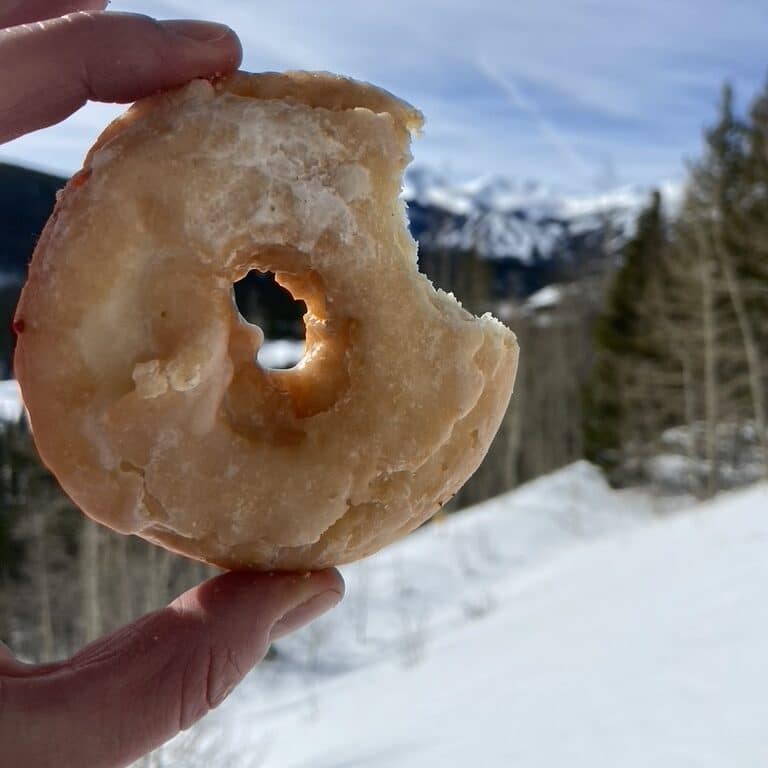
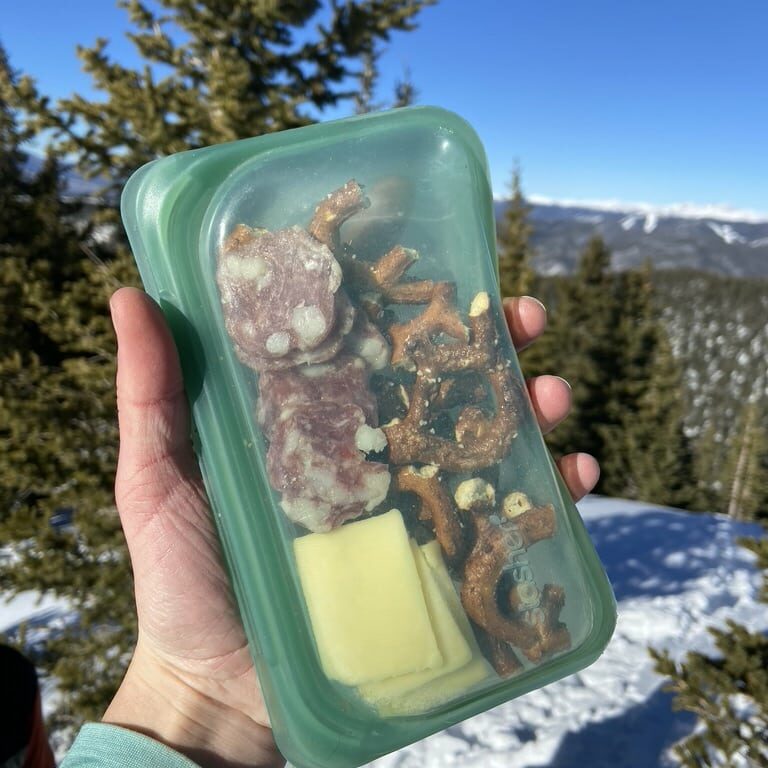
SOME OF MY FAVORITES FOR WINTER TOURING:
- Donuts
- Cookies
- Cheese + crackers
Note that intensity and the duration of your effort will dictate a lot of what foods you can and cannot tolerate. The longer you’re riding, the more likely it is that your gut can tolerate small amounts of those slower digesting protein, fat and fibers (ex. Justin’s maple nut butter packet or cheese, ham + jelly on a baguette) because you’re likely going at a lower intensity. But, as your intensity increases, your ability to tolerate protein and fat and fiber decreases and you need to rely more on carbohydrates.
One final note: make sure to stay hydrated!!
Cold weather suppresses your thirst at the same time that your body may require more fluid than usual in order to moisturize the cold, dry air that you inhale. This means your hydration needs can actually be higher during your winter efforts, despite your body telling you otherwise. If you come home from your long winter efforts and you’re overly thirsty for the rest of the day, this is why!
The best thing you can do here is get very intentional about your hydration. If you have trouble with fluids freezing, keep a soft flask in an internal jacket pocket. Set a timer to remind yourself to drink and pack warm beverages to encourage drinking more. Sugar in your fluid will help reduce the freezing temp, so this is a great time to add an electrolyte mix with sugar! My staples are the Skratch Labs Exercise Hydration. If it’s really cold, I’ll even bring a thermos of the Horchata Recovery Mix – yum!

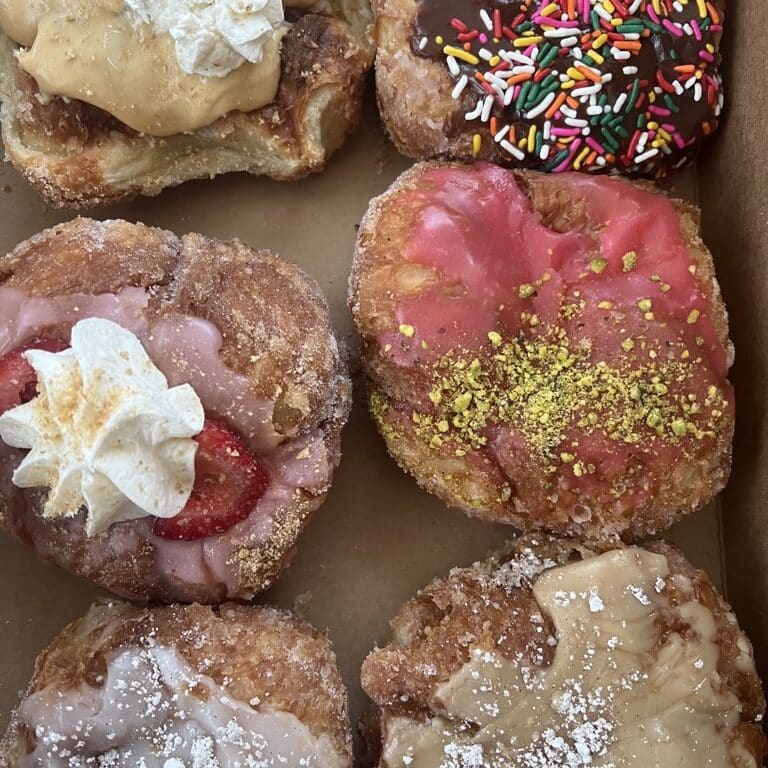
Questions? Shoot me a message on IG (@uri_carlson) and let me know you read this post!
Words + Photos by Uriell Carlson.
Uri (she/her) is a registered dietitian nutritionist and founder of Inner Wild Nutrition. She is based in Breckenridge, CO, but works with clients all over the world. Uri’s self-proclaimed mission is to ensure that every client of hers will never go on a “diet” again. Instead, she focuses on individual lifestyle factors and incorporates nutrition strategies that optimize performance, body composition, energy, and overall health, once and for all.

